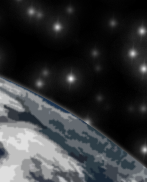 |
||
HomeSolar system UniverseAstronomy historyAstronomical distances and sizes |
||
Astronomy history |
||
|
Introduction Being the oldest of the sciences, astronomy has a long history. To simplify it, we decided to tell it from some curiosities and from the top names involved with the development of this science.
Curiosities The Sumerians, civilization that began between 3500 BC and 3000 BC, describe our solar system as a set of 12 planets, including the Sun, the Moon and Pluto. The 12th planet was called Nibiru. This was the planet of origin for Annunakis, alien nation in which the Sumerians believed to be gods. We found several reports of them in plates of clay. Observed for thousands of years, Nibiru is not seen in the heavens contemporaries because its orbit is highly elongated elliptical. For millennia, this planet remains far from the sun and the view of Earthlings, far beyond the orbit of Pluto. The Sumerians describe the Planet Nibiru in the most extreme point of its trajectory, away from the Earth about 30 million light-years. The year of Nibiru is 3 thousand and 600 years, regular time interval between the visits of Anunnakis. Stonehenge was constructed between 3100-2000 BCE on England's Salisbury Plain. Certainly the alignment of the "heelstone" with the rising Sun on Midsummer's Day (June 21, the Summer Solstice) represents a true astronomical alignment, and many other Megalithic sites have similar alignments.
What was the Big Bang?
A big explosion of a primordial atom. Edwin Huble observed the sky and conclude that all of the stars were moving away from a certain point. George Gamow, Robert Herrmann and Ralph Alpher said that the galaxies were so close that all of them occupied the same space. A noise on antennas used on intercity calls from New Jersey was investigate by Arno Penzias and Robert Wilson. They affirmed that it was the sound of the explosion of the Big Bang.
On September 10, 2008, we had the inauguration of the LHC – Large Hadron Collider, a huge machine built underground, between France and Switzerland for many scientists. This machine should change many current paradigms and may help us explain many of our doubts. One of this experiments is to simulate the Big Bang. A video telling curious about the functioning of the LHC is available at: http://cienciaesaude.uol.com.br/ultnot/2008/09/09/ult4477u974.jhtm.
This is a rap with lyrics in English, we have below:
The Large Hadron Rap
Designed with mind to send protons around A circle that crosses through Switzerland and France Sixty nations contribute to scientific advance
Two beams of protons swing round, through the ring they ride 'Til in the hearts of the detectors, they're made to collide And all that energy packed in such a tiny bit of room Becomes mass, particles created from the vacuum
ALICE looks at collisions of lead ions CMS and ATLAS are two of a kind They're looking for whatever new particles they can find.
The LHC accelerates the protons and the lead And the things that it discovers will rock you in the head. We see asteroids and planets, stars galore We know a black hole resides at each galaxy's core
|
||
The Wonderful World of Astronomy - ThinkQuest |
||
|
|
|
|
